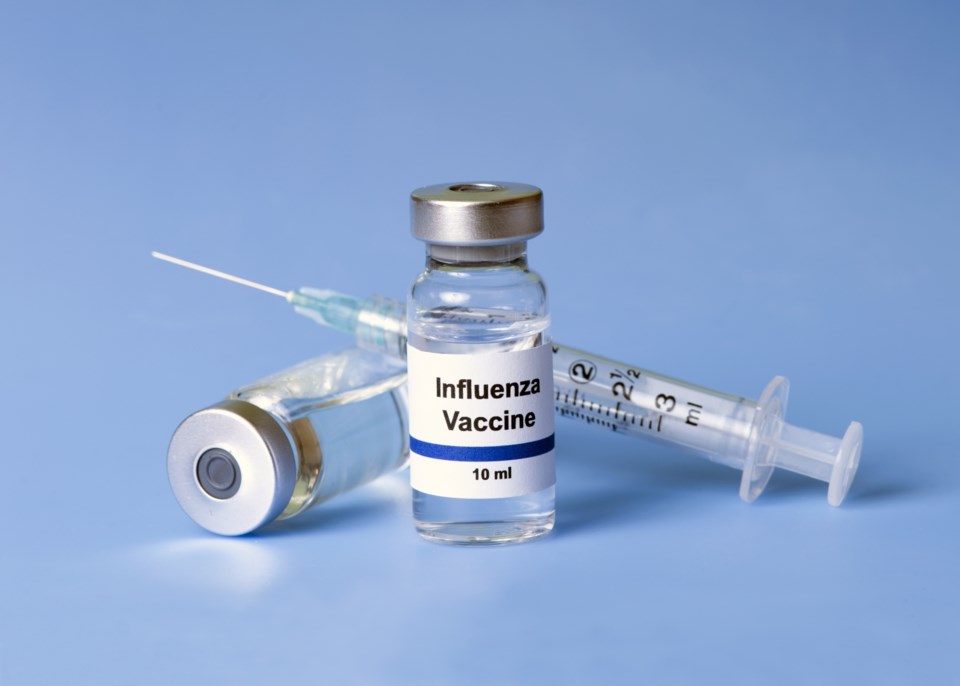Although COVID-19 is a new illness caused by a new virus, the fallout from the COVID-19 shutdown may put the world at risk for outbreaks of old illnesses: ones that were practically eradicated through vaccination.
The World Health Organization estimates that 117 million people worldwide will miss out on vaccinations for preventable diseases due to COVID-19. Closer to home, the Canadian Paediatric Society is worried that Canadians will fall behind on their vaccination schedules. Vaccines are one of the most important public health tools at our disposal. Ignoring vaccinations can have dire consequences.
Lessons from 1918
I am a historian of medicine. I study the history of infectious diseases and vaccination. In recent months, I have focused my research on the understudied effects of the 1918 flu pandemic on public health in Canada.
The experience of the 1918 influenza should act as a warning for provincial public health programs. My research shows that in the years after the 1918 flu, Canada suffered a series of outbreaks of smallpox and typhoid after vaccination took a backseat to the pandemic.
Provincial governments need to have a plan to get children back on track when COVID-19 subsides, or run the risk of creating an environment ripe for outbreaks of vaccine-preventable diseases such as measles.
Establishing public health measures
Before the 1918 flu, local public health programs were temporary, and workers were volunteers. In 1923, the Health Board of Québec provided financial support to create permanent public health units. As part of this, it instituted a hygiene week, when the government educated communities about the importance of public health measures, including vaccination. Ontario followed suit, in 1924, when the chief officer of health helped develop full-time public health units for the province.
Though it may seem that the 1918 flu directly spurred the development of permanent public health units and sophisticated routine vaccine programs, the truth is more complicated. My study of public health reports shows that after the 1918 flu, cases of smallpox and other preventable diseases spiked.
In 1920, Canada had 2,553 cases of smallpox, compared to a baseline of a couple hundred a year. Cases continued climbing to a peak of 3,300 in 1927, before declining to near zero in the 1940s. In 1923, Cochrane, Ont. had an outbreak of typhoid with 800 cases and 50 deaths. With a population of 3,400, cases represented almost a quarter of the population.
Outbreaks in the wake of 1918 flu
It is difficult to track vaccination uptake in the early 1900s, because records of vaccination during this period were spotty at best. Nonetheless, these lapses in public health expose failures to maintain adequate vaccination levels in communities across Canada in the wake of the 1918 flu, which interrupted many aspects of life including commerce, religion and vaccination.
After the 1918 flu, however, public health officers did not take measures necessary to make up for lost time and missed vaccinations. It was not until several outbreaks had occurred, such as the one in Cochrane, that public health authorities regained control over preventable diseases.
Getting infectious diseases under control meant ensuring shots were administered as part of routine vaccination programs. This was a messy process and it did not happen all at once. However, by 1940 Toronto acheived the distinction of being the first city with a population over 500,000 to report no cases of smallpox. Toronto achieved this by tracking vaccinations closely and by advertising smallpox vaccination at the same time every year.
Vaccine misinformation
Today, Canadian vaccination programs are threatened by vaccine misinformation, rejection and apathy. At the same time, a growing number of Canadians are hesitant to vaccinate. These factors leave Canada with slim margins on maintaining herd immunity, which refers to the point at which the percentage of people immunized ensures protection of the whole community from disease. Even before COVID-19, Canada has had outbreaks of measles in under-vaccinated communities. In 2019, Canada reported 113 cases of measles.
The COVID-19 pandemic has created many problems that will need attention. Already provinces are creating step-by-step plans to reopen their economies. What is needed now is for provinces to create step-by-step plans for identifying and contacting those who have fallen behind on their vaccinations.![]()
Derek Cameron, PhD Candidate in History, University of Saskatchewan
This article is republished from The Conversation under a Creative Commons license. Read the original article.



